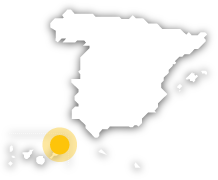
Chinijo Archipelago Nature Reserve

A landscape from another world
This nature reserve is situated on the island of Lanzarote, in the townships of Teguise and Haría. Besides its geological importance, there is also its biological significance, with several endangered and protected species.
The Chinijo Archipelago Nature Reserve covers the following areas of scientific-cultural interest: Alegranza, la Graciosa, Montaña Clara, Roque del Este, Roque del Oeste o del Infierno, los Riscos de Famara and the La Corona y Malpaís volcano. The landscape is characterised by the presence of volcanic structures, such as the Crater of Alegranza which has a diameter of 1.1 Km and a height of 289 m, and the Crater of Montaña Clara with a diameter of 1 Km and a height of 250 m. Numerous water fowl have their breeding colonies on the islands. Of these, seven are nesting species, such as the white-faced storm petrel, the Cory's shearwater, the little shearwater and two other species of petrel for example. Another group of birds present here are the birds of prey, represented by the fish eagle, the Eleonora's falcons, the Egyptian vulture or 'guirre', etc. There are also 14 species of terrestrial invertebrates which are endemic to the islets. The are 228 species of fish around the islets.
Debe activar Javascript para poder utilizar este servicio
Chinijo Archipelago Nature Reserve
Teguise, Lanzarote (Canary Islands)
Activa JS
What you need to know
-
Cultural information
Teguise, which was the capital of Lanzarote until 1852, has become one of the main cultural and tourist centres of the island. Its streets, palaces, convents and squares preserve the flavour of times past.
-
Environmental information
The Chinijo Archipelago Nature Reserve is characterised by the birds it is home to, being the most important area in the Canaries for the osprey, Eleonora's falcon, Barbary falcon, Cory's shearwater, storm petrel and the Egyptian vulture, amongst others.
Travel plans for inspiring you


